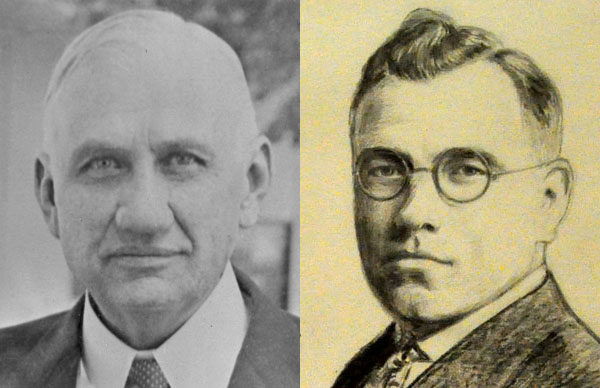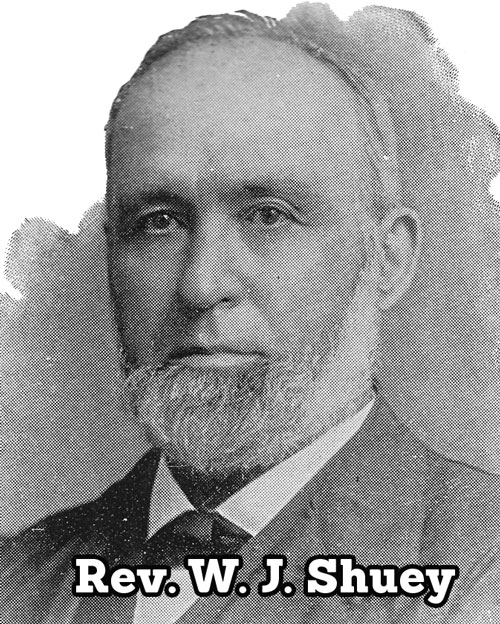03 Jun On This Day in UB History: June 3 (Marvin Price)
On June 3, 1991, Rev. Marvin D. Price was doing one of the things he enjoyed most: fishing. He was by himself out in a boat on a lake where he had fished many times before, a lake near Warsaw, Ind. But tragedy struck this day. Pastor Price fell out of the boat and, unable to swim, he drowned. Several people watching from the shore were unable to help him in time. Some think he may have had a heart attack.
Marvin Price was known much more as a fisher of men than as a fisher of fish. While he took up fishing in the 1980s, he had developed a passion for soul-winning decades before. It was not a hobby, or something to be done occasionally or when the opportunity arose. Rather, for Marvin Price, leading people to Christ was a consuming priority.
Marvin grew up in the home of Rev. Homer and Amanda Price, who served 16 United Brethren pastorates, the longest lasting just four years. Of those, 11 were church plants. He recalled, “My father’s zealous use of spiritual gifts enabled him to establish congregations quickly where there were none. Personal evangelism and crusade evangelism were both major parts of his ministry.”
When Marvin was in second grade, the family pulled a mobile home from church to church conducting evangelistic and revival meetings. Marvin attended 17 different schools that year. “I never fought church attendance,” he wrote in the November 1993 UB newsletter. “It was central to my life.”
While still a teenager, Marvin was assisting his father on the platform and in other areas of leadership. He began preaching at age 16. While a sophomore at Huntington College, he returned to Hillsdale, Mich., to preach a crusade and 35 people accepted Christ.
Marvin pastored two different churches while attending Huntington College. There, he met Grace Ann Graham, who grew up in the Colwood UB church in Caro, Mich. They were married in 1955. Their first UB pastorate was in Topeka, Kansas. After three years there, they were assigned to the Orange Avenue congregation in San Diego, Calif., where they enjoyed a very fruitful six-year ministry.
That was followed by 14 years of exciting growth at First UB in Lake Havasu City, Ariz. During that time, he reported 1745 people who came to Christ. Many people from that church went into fulltime ministry—the pastorate, missions, parachurch organizations, Huntington College, and other areas. Marvin’s sister, Ruth Ann Price, attended First UB while teaching school in Lake Havasu City. She left in 1969 to begin a career as a Wycliffe missionary. Marvin’s oldest daughter, Debbie Price Osberg, would eventually become a missionary in Honduras.
In 1981, the Prices began an eight-and-a-half year ministry at the Morning Star church in Kokomo, Ind. After that, the Prices moved to Spencerville, Ohio, to pastor the Monticello UB church. They were there just 18 months when the fishing accident occurred—but during that time, at least 41 people accepted Christ. During Marvin’s last service at Monticello, a young man was commissioned to ministry and received his local conference license.
Marvin wrote in 1993, “I have understood my call to be a divine one, a distinct honor and privilege….I remain in awe of the high and holy calling of having been set apart by my heavenly Father as one of His under-shepherds.”


 On June 1, 1854, the newly-created United Brethren mission board–the Home, Frontier, and Foreign Missionary Society–met in Westerville, Ohio. Their first action was a big one: “Resolved, That we send one or more missionaries to Africa as soon as practicable.”
On June 1, 1854, the newly-created United Brethren mission board–the Home, Frontier, and Foreign Missionary Society–met in Westerville, Ohio. Their first action was a big one: “Resolved, That we send one or more missionaries to Africa as soon as practicable.”